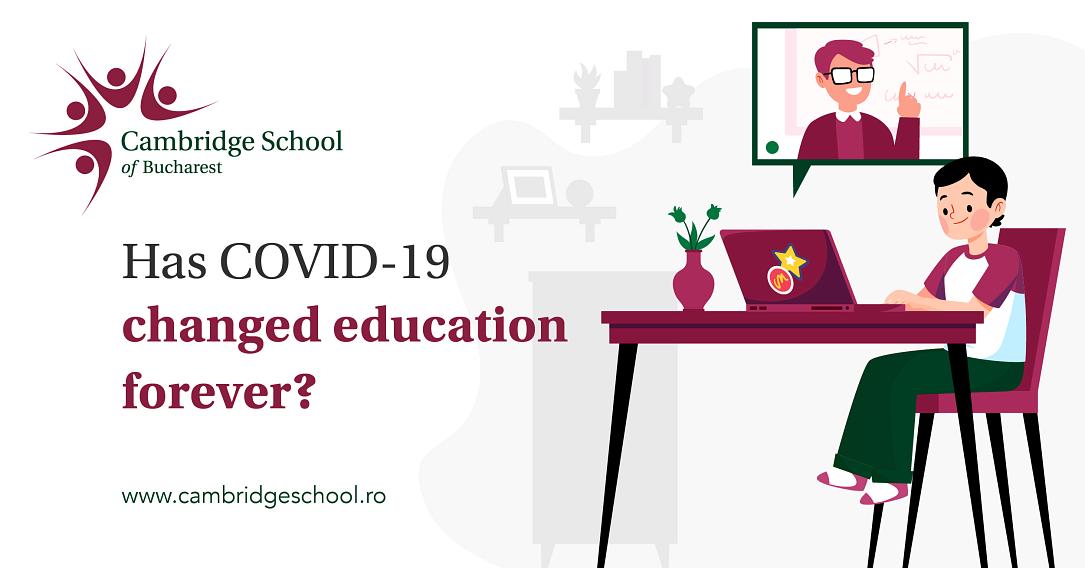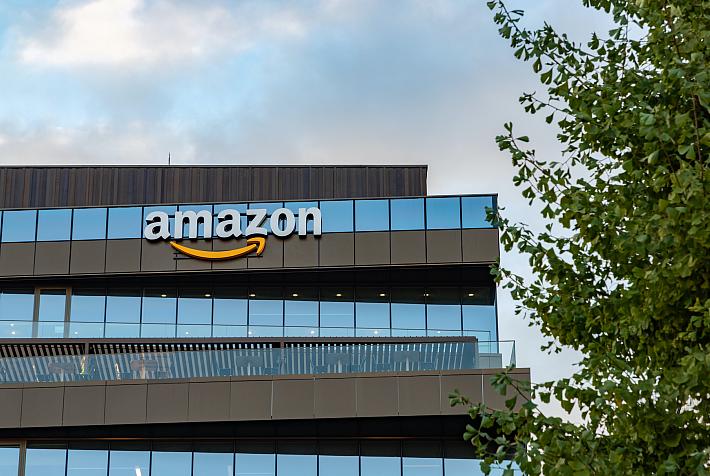This is native content supported by the Cambridge School of Bucharest.
Has COVID-19 changed education forever?

COVID-19 led to a global shutdown of schools with over 1.2 billion children having to adapt to learning outside of the classroom.
As a result, education had to change dramatically, and urgently, with e-learning and remote teaching coming to the forefront via a variety of digital platforms. Globally, the education sector has reported that the switch to online teaching came at the cost of hundreds of millions of pounds, and with the usual timeline for adapting a course from in-class to online (usually between 1 and 2 years) accelerating to a matter of days and weeks.
After very efficient research and planning, Cambridge School of Bucharest (CSB) implemented, within days, digital solutions for the IGCSE, AS, and A level programmes, quickly following with the rest of the school’s curriculum moving online.
“Having an already well-established platform in the school, Microsoft Office 365, meant that we were ready to move our classes online straightaway. As soon as the pandemic hit Europe, we began training our teachers and reworking our curriculum. This meant that we could move seamlessly from face-to-face lessons the day the home-isolation order was made to online teaching two days later, we are very grateful for the remarkable time and energy investment of our staff in adapting to this new reality,” says Matthew Wemyss, Head of Computer Science at CSB.
All of CSB’s activities were moved online promptly, including form tutoring sessions, online live lessons, submitting and marking of work, extracurricular projects, and even Golden Time activities for the Primary School.
“The real trick was managing to cover all curriculum elements and objectives for all year groups online within the timeline of the normal school year. The last thing we wanted was for CSB families, students, and teachers to miss out on a much needed summer vacation once the country re-opened. Our dedicated staff, supportive families, and organised administrative planning ensured that our students could enjoy their summer holiday without the fear of carrying curriculum gaps into academic year 2020 – 2021,” said Heath Renfroe, Deputy Director of CSB.
This did not come without a series of challenges. “Security, GDPR, the increased threat of webinar hacking, and concerns over fatigue caused by excessive screen time all made the safeguarding of students our top-priority when moving our lessons online. Making sure that our students could engage with interactive online platforms, whilst they and their parents feel safe and secure knowing the school has invested the time and effort in finding the best solutions,” added Naim Barbar, CSB IT Manager.
Before COVID-19, there was a steady growth in the adoption of education technology, with European investments in “EdTech” reaching 700 million euros in 2018 – 2019. However, since the beginning of the pandemic, companies have made rapid developments to increase performance and security, with many offering free access to their online platforms to provide schools with a variety of options to support their staff and students. The result of this has been an increase up to 700% in the number of users of platforms, such as Microsoft Teams, as they aim to expand the offerings of their products to become a one-stop shop for teachers and students.
“The use of video meetings, group chats, voting systems, and document sharing has opened up ways of communicating that most likely will become embedded practices at CSB. Online platforms and paperless interaction have allowed teachers and students to collaborate differently and, in some cases, more effectively,” noted Ioana Simonia, Head of Lower Secondary at CSB.
Katie Shanahan, Head of Teaching and Learning at CSB, worked with the EYFS – Kindergarten and Primary School teams to make sure that teaching was adapted in the most beneficial way for young learners. “Striking the right balance between a healthy amount of screen time and active engagement in lessons is perhaps most important for younger learners. The special care that students from EYFS through to Years 3 and 4 require in a normal classroom must also be observed online. When we moved all of these younger year groups to online materials and live learning lessons, teachers had to consider not only the specific needs of their individual students, but also the ages of their year groups. In the end, and with the incredible support of our EYFS and Primary parents, we were able to successfully cover the entire curriculum before the end of the school year. As teachers move forward with curriculum planning for the upcoming academic year, I think everyone is excited about the benefits this extraordinary experience, particularly online teaching, will bring to in-class, face-to-face learning in the coming academic year(s).”
During this time, CSB used their social media platforms to take part in the “chase the rainbow campaign,” fundraising activities with a local business to support hard-working doctors and nurses, as well as making book recommendations, taking part in the “Getty Museum Art Challenge,” and recording songs to lift everyone’s spirits.
Classrooms were not the only aspect of school life that needed to be moved online, the school’s admissions team were quick to react and restructure their processes to guide new parents applying to join CSB’s city centre EYFS – Kindergarten, or its new campus in Pipera.
“We quickly moved our entire process online, with a digital enquiry form, virtual meetings, and entry exams for hundreds prospective parents. Interest in the new campus in Pipera was extremely high, and we wanted to make sure we could continue to welcome our new families to our ever-growing community,” Rebecca Elian, Admissions Officer at CSB.
Throughout this challenging time, students have adapted to working in virtual classrooms and following augmented behaviour procedures. Having to listen intently as their teacher or classmates share their screens and explain concepts meant that all students had to be active participants in their own education.
“Throughout the online sessions, our teachers delivered lessons with the same level of professionalism and high-quality teaching. The lessons were just as engaging as before and each and every one of us understood the material. Despite the inconvenience of not being able to carry out face-to-face activities, this did not affect our morale through these trying times,” Rebecca, Year 10 student.
Moving school communities online during the pandemic has led to stepping away from the normal routines of a school and forging new ways of communicating, learning, and replicating the intricacies of school life. The post-pandemic world will result in schools taking the best parts of online schooling and blending those with the joy of finally seeing the students again.
This is native content supported by the Cambridge School of Bucharest.













